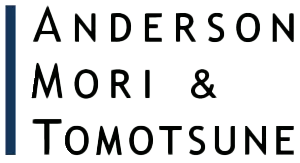- in United States
- within Consumer Protection topic(s)
- with readers working within the Accounting & Consultancy industries
Introduction
For last 12 months, we have seen several interesting announcements from Japanese big financial institutions which unveiled their strong interests in entering into digital securities (a.k.a. security tokens) business.
In November 2019, Mitsubishi UFJ Financial Group announced the establishment of research consortium to develop standards around digital securities management. It is also unveiled that Mitsubishi UFJ Trust and Banking Corporation, one of the biggest trust banks in Japan, has developed a blockchain based platform named "progmat" which enables automatic management of digital securities' transactions.
In February 2020, Mizuho Financial Group launched a demonstration test of issuing digital securities targeting individual investors. The Group is also planning to establish a blockchain based platform for digital securities transactions.
In March 2020, Nomura Securities and its subsidiary BOOSTRY announced that they have provided the technical infrastructure for and have underwritten the "Digital Asset Bonds" and "Digital Bonds" (being blockchain technology-based bonds) issued by Nomura Research Institute.
In July 2020, Tokai Tokyo Financial Holdings. unveiled that it launched a pilot program in which securitized real estates in Japan will be digitalized as security tokens and such security tokens will be traded on iSTOX, a security token exchange in Singapore.
In October 2020, SBI Holdings, a holding company of a Japanese financial conglomerate, announced a couple of its planned digital securities businesses, including (i) its undertaking of allotted digitalized ordinary stocks issued by SBI e-Sports, (ii) running public offerings of digitalized bonds on behalf of issuing companies through its subsidiary SBI Securities and (iii) running public offerings of fund-type securities on behalf of investment funds.
These developments were ignited by the introduction of new regulations on digital securities under the Financial Instruments and Exchange Act (the "FIEA"), which came into force on May 1, 2020.
New Regulations on Digital Securities
Japanese regulators was unclear on whether "initial coin offerings" ("ICOs") and "security token offerings" ("STOs") are governed by the Payment Services Act (the "PSA") which regulates, among others, crypto assets such as cryptocurrencies, or the FIEA, which regulates securities and derivatives, or both. For this reason, prospective issuers (including overseas issuers) of ICOs and STOs in Japan had faced significant uncertainty. This resulted in the restriction of ICO and STO issuances in Japan. To address this situation, the concept of "electronically recorded transferable right" ("ERTR") and "electronically recorded transferable right to be indicated on security" ("ERTRIS") to clarify the scope of digital securities governed by the FIEA. As explained in details below, the ERTR is defined to include tokens representing rights where distributions are paid to token holders on the profits of the business conducted by the token issuer, and calculated based on the ratio of the holder's token ownership. ERTRISs mainly consist of ERTRs and tokenized conventional securities such as shares and bonds. ERTRISs are excluded from the definition of "crypto asset" under the PSA. Accordingly, it is now clear that the PSA is inapplicable to tokens falling within the definition of ERTRIS.
What are ERTR and ERTRIS?
The FIEA has traditionally classified securities into: (i) conventional securities such as shares and bonds (Paragraph 1 Securities) and (ii) contractual rights such as trust beneficiary interests and interests in collective investment schemes that are deemed securities (Paragraph 2 Securities). Paragraph 1 Securities, which are more liquid, have been subject to relatively more stringent disclosure and licensing (registration) requirements. Paragraph 2 Securities, being less liquid, have been subject to relatively more lenient requirements. Against this backdrop, securities issued using an electronic data processing system such as blockchain, are expected to be even more liquid than Paragraph 1 Securities. For this reason, the amended FIEA has introduced a new regulatory framework for securities transferable through electronic data processing systems. More specifically, under the amended FIEA, securities transferable by electronic data processing systems have been classified into the following three categories:
- Paragraph 1 Securities (such as shares and bonds) that are transferable through electronic data processing systems ("Tokenized Paragraph 1 Securities");
- Contractual rights (such as trust beneficiary interests and interests in collective investment schemes) that are conventionally categorized as Paragraph 2 Securities and transferable through electronic data processing systems (ERTRs); and
- Contractual rights (such as trust beneficiary interests and interests in collective investment schemes) that are conventionally categorized as Paragraph 2 Securities and transferable through electronic data processing systems, but the negotiability of which is restricted to a certain extent ("Non-ERTR Tokenized Paragraph 2 Securities").
Tokenized Paragraph 1 Securities and ERTRs are basically subject to same regulations with those on Paragraph 1 Securities, but some additional requirements are applicable from the perspective of their digitalized nature. While, Non-ERTR Tokenized Paragraph 2 Securities remain subject to same regulations with those on Paragraph 2 Securities because they are less liquid.
Definition of ERTRs
ERTRs refer to the rights conventionally treated as Paragraph 2 Securities (such as trust beneficiary rights and interests in collective investment schemes) that "are represented by proprietary value transferrable by means of an electronic data processing system (but limited only to proprietary values recorded in electronic devices or otherwise by electronic means)", excluding "those rights specified in the relevant Cabinet Office Ordinance in light of their negotiability and other factors." In this connection, "those rights specified in the relevant Cabinet Office Ordinance in light of their negotiability and other factors" are generally understood to mean rights in respect of which:
- Technical measures have been taken to prevent the transfer of the proprietary value of such rights to persons other than:
(a) qualified institutional investors; or
(b)investors eligible to conduct specially permitted businesses for qualified institutional investors, (the so-called "Article 63 Exemption") such as (x) listed companies, (y) corporations with capital or net assets of ¥50 million or more, and (z) individuals with investment assets (including crypto assets) of ¥100 million or more, and who have maintained their securities account(s) for more than 1 year.
- Technical measures have been taken to prevent the proprietary value of such rights from being transferred without an offer from the owner and approval from the issuer for every transfer.
The key purpose of the amended FIEA is to subject ERTRs to those disclosure and licensing (registration) requirements applicable to Paragraph 1 Securities.
Definition of ERTRIS
ERTRISs refer to dematerialized (paperless) securities that are "represented by proprietary value transferrable by means of an electronic data processing system (but limited only to proprietary values recorded in electronic devices or otherwise by electronic means)." ERTRISs can be classified into the following rights:
(i) Tokenized Paragraph 1 Securities (such as tokenized shares and bonds);
(ii) ERTRs; and
(iii) Non-ERTR Tokenized Paragraph 2 Securities.
Under the FIEA Revisions, rights under items (i) and (ii) above are deemed Paragraph 1 Securities, while rights under item (iii) are treated as Paragraph 2 Securities. This classification creates a significant difference in the disclosure and licensing (registration) requirements applicable to the respective rights.
Disclosure requirements
As a result of the application of disclosure requirements to ERTRs and Tokenized Paragraph 1 Securities, issuers of ERTRs or Tokenized Paragraph 1 Securities are in principle required, upon making a public offering or secondary distribution of these securities, to file a securities registration statement and issue a prospectus. A person who causes other persons to acquire ERTRs or Tokenized Paragraph 1 Securities or who sells these securities to other persons through a public offering or secondary distribution must deliver a prospectus to the other persons in advance or at the time of the acquisition or sale. The prospectus must include, among others, name of the digital platform on which ERTRs or Tokenized Paragraph 1 Securities are traded, which blockchain network (if any) the digital platform utilizes, the reason why the issuer or the broker-dealer chose such digital platform and how the platform prevents unintended transfer of tokens, unauthorized access to and leakage of tokens.
Disclosure requirements do not apply to Non-ERTR Tokenized Paragraph 2 Securities unless they constitute Rights in Securities Investment Business and solicitation for interest in such rights has been conducted, as a result of which 500 persons or more come to hold such rights.
Licensing (registration) requirements
As ERTRs or Tokenized Paragraph 1 Securities are expected to constitute Paragraph 1 securities, a person acting as a broker, agent or intermediary in respect of the sale or purchase of these securities or the handling of an offering of them in the course of a business is required to undergo registration as a Type I Financial Instruments Business Operators ("Type I FIBO") under the FIEA.
In light of the higher degree of freedom in designing ERTRs and Tokenized Paragraph 1 Securities and the higher liquidity of these securities, Type I FIBOs who handle these securities will be required to develop a control environment appropriate for the characteristics of the relevant securities, in addition to the existing control environment, in order to protect investors.
For example, it is required that:
(1) appropriate reviews should be regularly conducted, including
expert verifications, regarding the risks associated with networks
such as blockchain used for these securities;
(2) system risks should be managed for transactions of these
securities in light of higher risks of unauthorized access to and
leakage of tokens due to cyberattacks; and,
(3) segregation management should be conducted for transactions of
these securities in light of the need to deal with the risk of
leakage.
The content of this article is intended to provide a general guide to the subject matter. Specialist advice should be sought about your specific circumstances.


